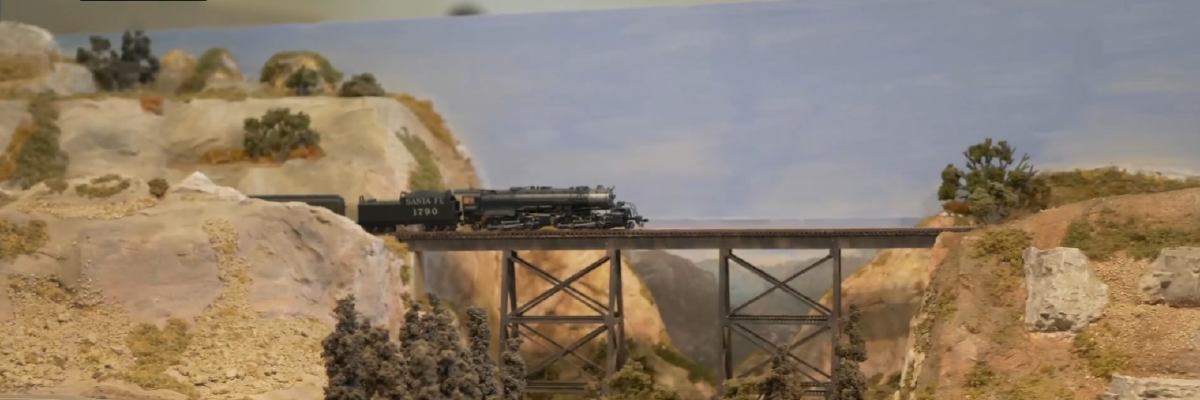Burlington Central is an imaginary layout based somewhere in the mid west of the USA. The name derives from the interests of one of our club members who is interested in American railroads and models Burlington Northern and two of its predecessors, the Chicago, Burlington and Quincy (Burlington Route) and Great Northern. These railroads covered an area west from Chicago to Seattle south to the Gulf coast.
The scenery on the layout is based on Colorado/Montana Rocky Mountain areas and it is assumed that this is where the layout is based. The layout is not based on any particular era and therefore this allows us to run Locomotives and Freight Cars from the mid 1950’s through to the early 1990’s.
At present all Locomotives are diesel, as by the mid 1950’s most American Class 1 railroads had converted to diesel operation. The layout is a twin level one with a double track mainline through a small town (Morrison’s Gap) on the lower level and a single track mainline through more mountainous area on a higher level. All Locomotives and a majority Freight Cars are fitted with Microtrains magnetic couplers. This allows us to remotely switch (shunt) freight cars into various sidings at the small town and also at the sawmill on the higher level.
The Sawmill is based on the American principle of empties in and loads out. Empty bulkhead flat cars are taken into the sawmill to be loaded with finished lumber which is then moved on down the line. In general American mainline trains average 6000′ in length and depending on terrain and loco horsepower can average up to six or more locomotives per train. This is obviously difficult to model, even in N scale and so we normally use two or three Locomotives and twenty or so freight cars on our mainline trains. Local freights comprise one loco and seven or eight freight cars.
The layout requires three operators, one for each line on the lower level and one for the higher level. Operation on the lower level is by cab control with the tracks being divided into sections and each operator having the power to drive his train on any section using section switches. In practice however, each operator stays on his own line.
We have now introduced Digitrax DCC control to the layout and generally use this on the upper level at exhibitions.
